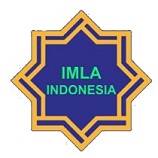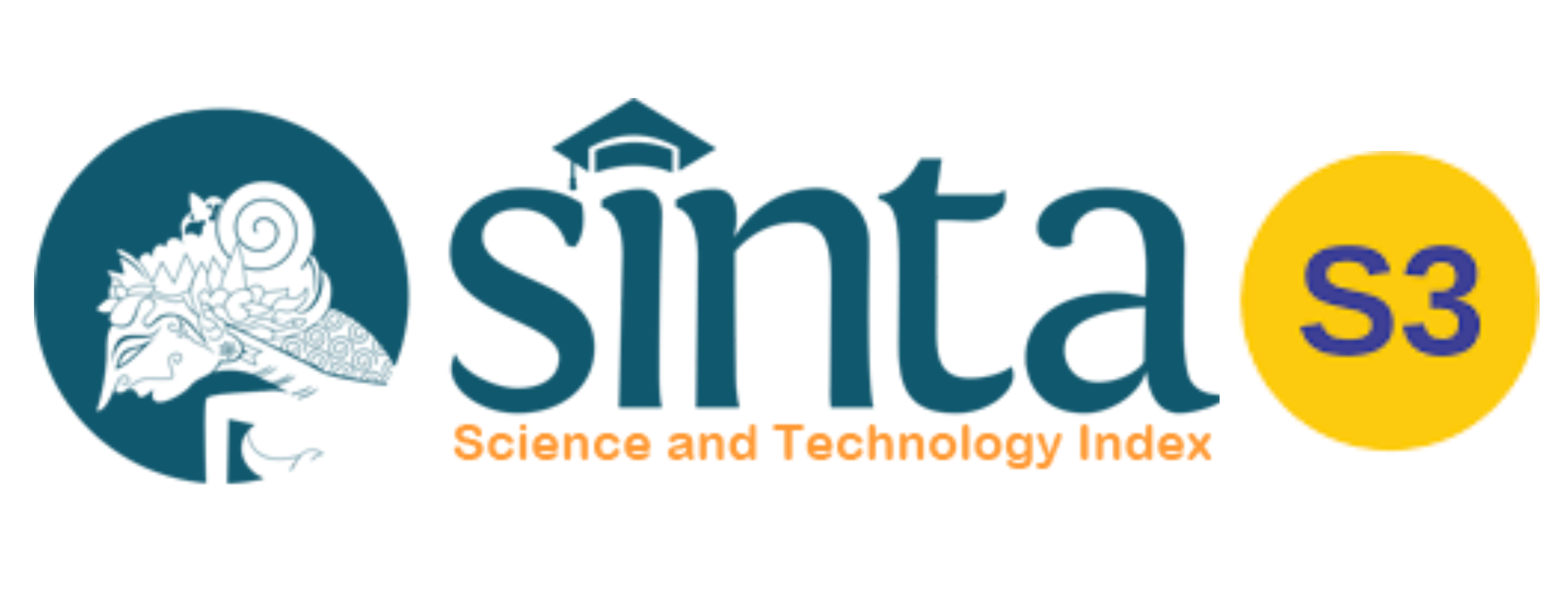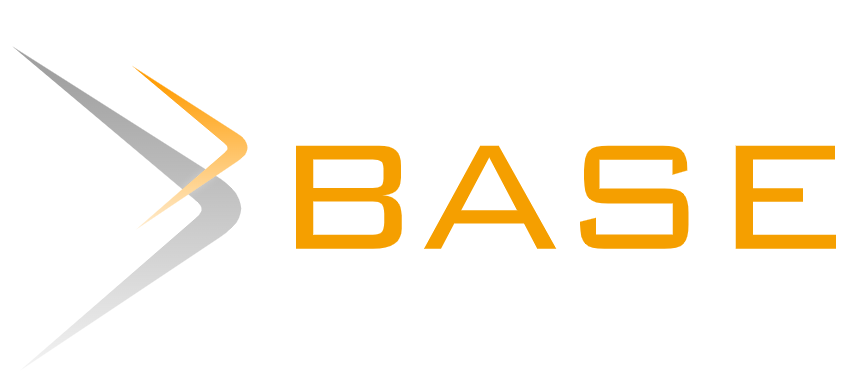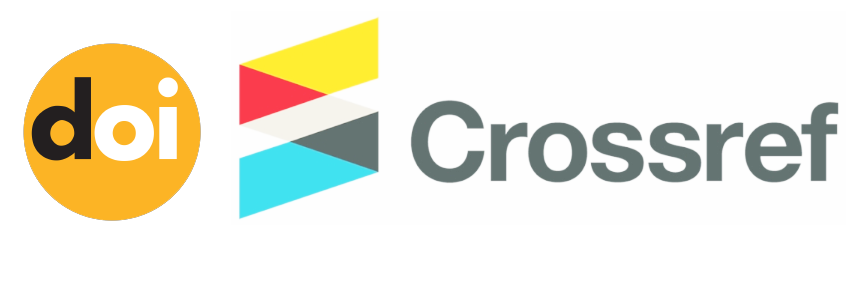CONTENT ANALYSIS OF ABU UBAIDAH’S SPEECH ON ALJAZEERAMUBASHER’S INSTAGRAM DURING OPERATION AL-AQSA TEMPEST
Abstract
Abu Ubaidah's speech aired by aljazeeramubasher's Instagram account was in the spotlight after the occurrence of Toufan al-Aqsa on October 7, 2023. The firm and straightforward style of language and the use of fushah Arabic are definitely a special attraction for listeners. This study aims to describe the style of language and messages conveyed by Abu Ubaidah in his speech using the content analysis method approach of Krippendorff's perspective. The stages of Krippendorff content analysis consist of unitizing, sampling, recording, reducing, inferring, narating, and desingning. This stage is carried out with watching, listening, and note-taking techniques. The results showed that the Arabic uslub used by Abu Ubaidah was fushah Arabic in accordance with the rules of good and correct Arabic. No Abu Ubaidah used 'ammiyah Arabic at all in his speeches. Meanwhile, in terms of the message conveyed by Abu Ubaidah with Krippendorf content analysis techniques, it was found that there was an invitation and expression of optimism from Abu Ubaidah to especially Muslims and all people in the world for Allah's help to the Palestinian people and the struggle of Hamas forces in defending Palestinian land. Abu Ubaidah as the spokesman for the Izzuddin Al-Qassam brigade managed to transfer this confidence to all the audience who watched and listened to his speech.
Keywords
Full Text:
PDFReferences
Abdurrahman. (2024). Tindak tutur Ilokusi dalam Pidato Kenegaraan Presiden Joko Widodo pada 16 Agustus 2023 Illocutionary Acts in a National Speech of President Joko Widodo on 16 August 2023 [Universitas Nasional]. http://repository.unas.ac.id/id/eprint/10742
Aqsa, S. of. (2023). Al-Qassa Serukan Tufan Al-Aqsa: Waktunya Sudah Tiba, Usir Penjajah Israel. Spirit of Aqsa. https://spiritofaqsa.or.id/al-qassam-serukan-tufan-al-aqsa-waktunya-sudah-tiba-usir-penjajah-israel.html
Awang, A. H. (2021). Taufan Al-Aqsa dan Penyatuan Ummah. Harakah Daily. https://harakahdaily.net/index.php/2024/04/14/taufan-al-aqsa-dan-penyatuan-ummah/
Azul, D., & Hancock, A. B. (2020). Who or what has the capacity to influence voice production? Development of a transdisciplinary theoretical approach to clinical practice addressing voice and the communication of speaker socio-cultural positioning. International Journal of Speech-Language Pathology, 1–12. https://doi.org/https://doi.org/10.1080/17549507.2019.1709544
Bock, M. A. (2022). Klaus Krippendorf (1932-2022). In Journal of Design Culture. https://doi.org/https://doi.org/10.21096/disegno_2022_2mab
Celso, A. (2024). Hamas’s unholy jihad. Taylor&Francis, 1–19. https://doi.org/https://doi.org/10.1080/13537121.2024.2394286
Dumay, J., & Cai, L. (2015). Using Content Analysis as a Research Methodology for Investigating Intellectual Capital Disclosure: A Critique. Journal of Intellectual Capital, 6(1), 121–155.
Fikry, A. (2020). Representasi Konsep Retorika Persuasif Aristoteles dalam Pidato Ismail Haniyah untuk Umat Islam Indonesia. Jurnal Al-Azhar Indonesia Seri Humaniora, 5(3), 137–145.
Harwood, T. G., & Garry, T. (2003). On Everview of Content Analysis. The Marketing Review, 3(4), 479–498.
Husna, I., Azkiya, H., Febriani, S. R., Rahmawati, & Kustati, M. (13 C.E.). The Analysis of Arabic Language Textbookfor Class II Elementary School. Lectura: Jurnal Pendidikan, 2(2022), 234–245.
Izar, J., Nasution, M. M., & Ratnasari, M. (2020). Assertive Speech Acts in Mata Najwa Program of Episode Gara-gara Corona. Lexeme: Journal of Linguistics and Applied Linguistics, 2(1), 56.
Jayano, I. M. O. M., & Batubara, A. K. (2019). Pidato Presin Soekarno Tahun 1958-1966 (Kajian Analisis Isi Perspektif Komunikasi Islam). At-Tabsyir: Journal of Islamic Broadcasting Communication, 6(2), 339–366.
Kleinheksel, A. J., Rookich-Winston, N., Tawfik, H., & Wyatt, T. R. (2020). Qualitative Research in Pharmacy Education: Demystifying Content Analysis. American Journal of Pharmaceutical Education, 84(1), 127. https://doi.org/https://doi.org/10.5688/ajpe7113
Krippendorff, K. (2019). Content Analysis: An Introduction to Its Methodology (T. Accomazzo, E. Helton, A. Olson, & M. Ponce (eds.); 4th ed.). Sage Publications. https://books.google.co.id/books?hl=id&lr=&id=nE1aDwAAQBAJ&oi=fnd&pg=PP1&dq=klaus+krippendorff+content+analysis&ots=y_8iUnmLay&sig=60Mi0_8px4wgtBJab6-R18DMP-A&redir_esc=y#v=onepage&q=klaus krippendorff content analysis&f=false
May, C. (2022). In Memoriam: Klaus Krippendorff. Systemic Design Association. https://rsdsymposium.org/in-memoriam-klaus-krippendorff/
Muvid, M. B. (2021). Menjunjung Tinggi Islam Agama Kasing Sayang dan Cinta Kasih dalam Dimensi Sufisme. Jurnal Reflektika, 16(2), 145–171.
Neno, A., Hana, F. T., & Wutun, M. (2020). Personal Brand Jokowi dalam Pidato Optimis Indonesia Maju. Jurnal Digital Media & Reletionship, 2(2), 67–75.
Nurishlah, L., Subiyono, S., & Safitri, S. N. (2023). The Urgency of Role Playing Models in Improving the Character of Speech Manners at P5 Activities in Elementary Schools. Jurnal Ilmiah Wahana Pendidikan, 9(15), 1. https://doi.org/https://doi.org/10.5281/zenodo.10806803
Paz, M. A., Montera-Diaz, J., & Moreno-Delgado, A. (2020). Hate Speech: A Systematized Review. Sage Journals, 1–12. https://doi.org/https://doi.org/10.1177/2158244020973022
RADJABOVICH, B. R., OSTONOVICH, B. O., & BAFOEVNA, N. D. (2023). Differential, Communicative and Neuropsycholinguistic Problems of Semantic Functionally Formed Speeches in Unrelated Languages. Journal of Survey in Fisheries Sciences, 10(2), 1367. https://doi.org/https://doi.org/10.17762/sfs.v10i2S.871
Rahmania, N., & Utomo, A. P. Y. (2021). Analisis Kalimat Turunan Plural Bertingkat Hasil Gabungan Dua Klausa dalam Naskah Pidato Kenegaraan Presiden RI 2020. Imajeri: Jurnal Pendidikan Bahasa Dan Sastra Indonesia2, 3(2), 151. https://doi.org/0.22236/imajeri.v3i2.6194
Said, U. M. R., Arsyad, H., Haidar, A., & Farisi, M. Z. Al. (2024). Politeness in Language and Speech Events in War Situations: Analysis of Abu Ubaidah’s Speech. Lensa: Kajian Kebahasaan, Kesusasteraan, Dan Budaya, 14(1), 104–125. http://jurnal.unimus.ac.id/index.php/lensa
Sari, N. K. (2020). Analisis Framing Pemberitaan Pidato Menteri Nadiem Makarim pada Peringatan Hari Guru Nasional. Jurnal Dinamika Pemerintahan, 3(1), 12–22.
Sudibyo, & Banowo, E. (2023). Presentasi Diri Calon Presiden RI 2024 Anies Baswedan pada Pidato “Apel Siaga Perubahan” Menjelang Pemilu 2024. Jurnal Ilmu Komunikasi, 13(2), 4.
Sulaiman, A., Anshory, A. M. Al, & Hasaniyah, N. (2024). The Meaning of Jihad in Abu Obaida’s Oration on The Palestinian Conflict. Al-Muyassar: Jurnal of Arabic Education, 3(2). https://jurnal.umt.ac.id/index.php/al/article/view/11769
Syarifullah, A. W. (2020). Upaya Peningkatan Keterampilan Menyimak Pidato Persuasif dengan Menggunakan Konsep Peta Pikiran. Journal of Education Action Research, 4(4), 434–444.
Usman, R. (2017). Penggunaan Tutor Sebaya dan Aktivitas Siswa untuk Meningkatkan Hasil Belajar Pokok Bahasan Analisi Isi Pidato Siswa Kelas VIII SMP Negeri 2 Tapung. GERAM (Gerakan Aktif Menulis), 5(2), 16–27.
White, M. D., & Marsh, E. E. (2006). Content Analysis: A Flexible Methodology. Johns Hopkins University Press, 55(1), 22–45.
DOI: https://doi.org/10.20961/cmes.17.2.89510
Refbacks
- There are currently no refbacks.
Copyright (c) 2024 Center of Middle Eastern Studies (CMES)

This work is licensed under a Creative Commons Attribution-ShareAlike 4.0 International License.
| Copyright of CMES ISSN 2085-563X (print) and ISSN 2502-1044 (online) CMES Journal is licensed under a Creative Commons Attribution-ShareAlike 4.0 International License. | CMES (Center of Middle Eastern Studies) Print ISSN: 2085-563X Online ISSN: 2502-1044 Website: https://jurnal.uns.ac.id/cmes/index Email: cmes@mail.uns.ac.id Published by: Universitas Sebelas Maret Office: Department of Arabic Literature, Faculty of Cultural Science, Universitas Sebelas Maret Ir. Sutami Street, No. 36A, Surakarta, Jawa Tengah 57126 Phone: +62 822-4000-2313 |















